1 YONGKOM YONGKOM (YONGOM, YONGGOM) ... 2,000 in Irian ...
1 YONGKOM YONGKOM (YONGOM, YONGGOM) ... 2,000 in Irian ...
1 YONGKOM YONGKOM (YONGOM, YONGGOM) ... 2,000 in Irian ...
You also want an ePaper? Increase the reach of your titles
YUMPU automatically turns print PDFs into web optimized ePapers that Google loves.
- Drabbe 1954:150.<br />
Katì is spoken by tribes liv<strong>in</strong>g between the Kòwo (or Kao)<br />
and the Mùju Rivers, the latter be<strong>in</strong>g one of the tributaries of<br />
the Kòwo, itself a tributary of the Digul River. The tribes --<br />
referred to as Muju people by the Dutch adm<strong>in</strong>istration -- have no<br />
word <strong>in</strong> their language nam<strong>in</strong>g all / of them <strong>in</strong> bulk, but are<br />
called Qawti by the Jaqàj, and Ghàwisi by the Àwju. Both names<br />
can perhaps be l<strong>in</strong>ked with the word katì which, <strong>in</strong> the Ni<strong>in</strong>atì<br />
dialect of Katì, means "real man". The language falls <strong>in</strong>to a<br />
great number of dialects of which Father DRABBE describes two,<br />
i.e. the Ni<strong>in</strong>atì dialect spoken on both sides of the Mùju River<br />
<strong>in</strong> and near the village of Ni<strong>in</strong>atì situated on the bank of the<br />
river, and the Metòmka dialect spoken on the banks of the Kòwo<br />
(or Kao) and <strong>in</strong> all villages to the south of the village of<br />
Jiptèm, Metòmka be<strong>in</strong>g one of these villages. There are, however,<br />
marked local differences <strong>in</strong> the language of each village<br />
throughout the whole Katì area.<br />
- Wurm 1953:303-304.<br />
*<br />
(Kati)<br />
(N<strong>in</strong>ati- en Metomka dialecten): N<strong>in</strong>ati, Kimko, M<strong>in</strong>ipko,<br />
Kwémtupunon, Konemtetput, Kamakpon, Kanggim, Kawangtet, Jiptem,<br />
Jipi, Kimki, Komera, Timko, Inggembit, Mokpit, Namat, Mokbiran,<br />
Wambiran, Metomka, Jonongo, Ogemkapa, Kakuna, Woman, M<strong>in</strong>diptana,<br />
Amupdipun, Imko, Jomkondo, Anggamburan, Amburan, Kanup, Atko,<br />
Kkanggup, Karimko, Mana, Momanako, Mitiwangko, N<strong>in</strong>ikapa,<br />
Kanggewot, Jomka, Aüt, N<strong>in</strong>ggirum, Kapom, Jonggom, Ketawut,<br />
Kakaip, Tenekaram, Kowan, Okpari, Wap, Wambon, Kam<strong>in</strong>dip, Kawièt<br />
(? zielen).<br />
- Galis 1955-56:176.<br />
*<br />
2 Yonggom may connect with Northern and Southern Kati as a<br />
l<strong>in</strong>k <strong>in</strong> a dialect cha<strong>in</strong> (Healey 1964, Voorhoeve 1975b) which<br />
would make these three languages a s<strong>in</strong>gle language.<br />
- Voorhoeve 1981:Map 4.<br />
*<br />
KATI, NORTHERN<br />
Go<strong>in</strong>g down the river Digul we meet the tributary Ka o on the<br />
left. This name Ka o is a corruption of the native word Kowo.<br />
One of the affluents of the Kowo is the river Muju. The tribes<br />
liv<strong>in</strong>g between Muju and Ka o are called Mujunese by the Dutch<br />
Government and the Catholic Mission. In their own language there<br />
is no such word as <strong>in</strong>dicates the whole of the tribes, but they<br />
are called Qa u ti by the Jaqa i -people, liv<strong>in</strong>g <strong>in</strong> the bas<strong>in</strong> of the<br />
river Mapi; and Ghawisi by the A u ju-people, liv<strong>in</strong>g between the<br />
Digul and the Mapi. The territory, where the Qa u ti-people live,<br />
8


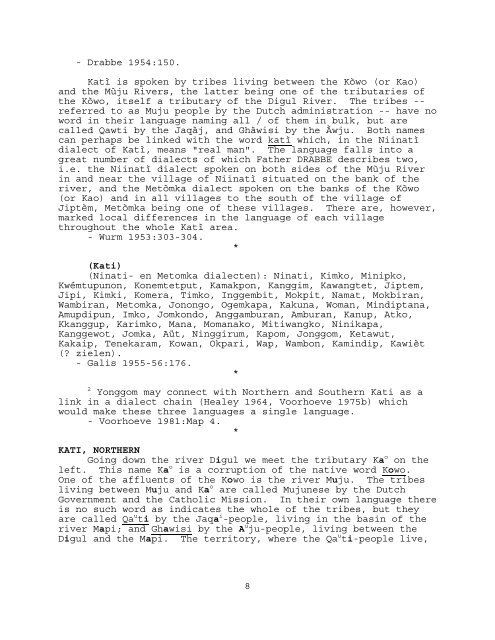
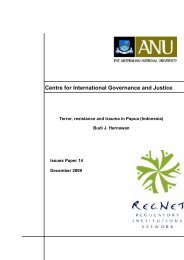
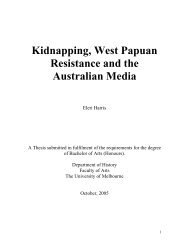
![[1958: Gahuku]. - PapuaWeb](https://img.yumpu.com/25139694/1/190x245/1958-gahuku-papuaweb.jpg?quality=85)
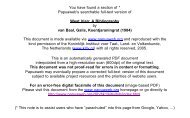


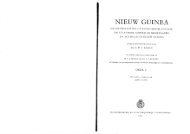
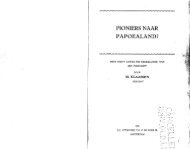
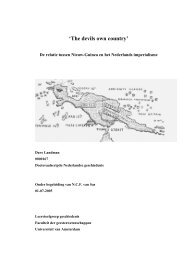
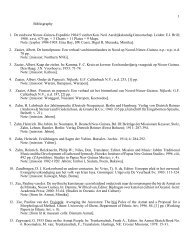
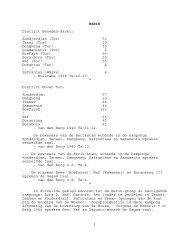

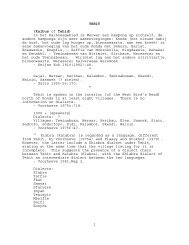
![1 EKARI (EKAGI) [Map] (cf S&C) Akaromani Apoejai ... - PapuaWeb](https://img.yumpu.com/19731685/1/190x245/1-ekari-ekagi-map-cf-sc-akaromani-apoejai-papuaweb.jpg?quality=85)
![WUTUNG [passim in text] Wutung (Oenaki, Oinåke) - Friederici ...](https://img.yumpu.com/15960045/1/190x245/wutung-passim-in-text-wutung-oenaki-oinake-friederici-.jpg?quality=85)